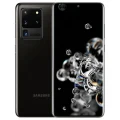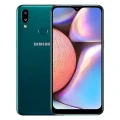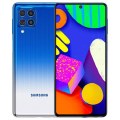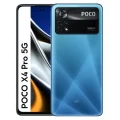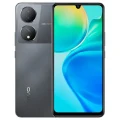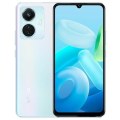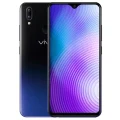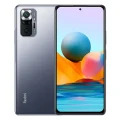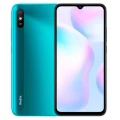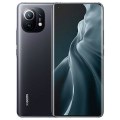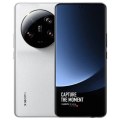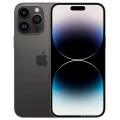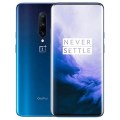- Awesome page
- Latest Mobile
- Smartphones
- Samsung Galaxy S10
Samsung Galaxy S10
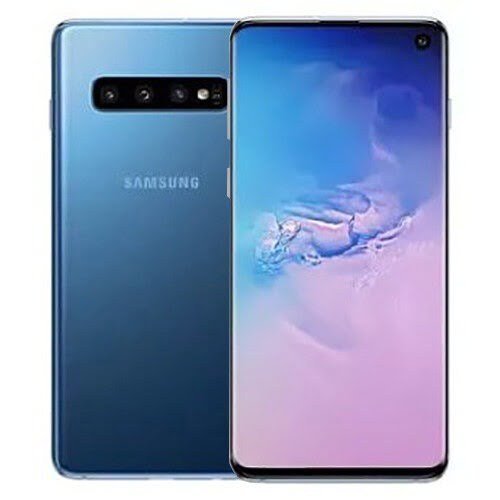


Samsung Galaxy S10 Price in Bangladesh
The 8GB RAM and 128GB ROM variant of the Samsung Galaxy S10 is available in Bangladesh for BDT 89,900. This high-end smartphone includes a 6.1-inch Dynamic AMOLED screen, triple camera arrangement, and a 3400mAh battery, providing excellent performance and design.
Specifications
General
| Model | Samsung Galaxy S10 |
| Announced | 15-02-2019 |
| Released | 15-03-2019 |
| Status | Available |
| Official price | Official (8GB+128GB) ৳89,900 |
| Unofficial price | Unofficial (8GB+128GB) DUOS ৳52,500 / (8GB+512GB) ৳61,000 |
Design
| Dimensions | 149.9 x 70.4 x 7.8 mm (5.90 x 2.77 x 0.31 in) |
| Weight | 157 g (5.54 oz) |
| Colors |
Prism White, Prism Black, Prism Green, Prism Blue, Canary Yellow, Flamingo Pink |
Network
| Technology | GSM / CDMA / HSPA / EVDO / LTE |
| 2G Network |
GSM 850 / 900 / 1800 / 1900 - SIM 1 & SIM 2 (dual-SIM model only) CDMA 800 / 1900 - USA |
| 3G Network |
HSDPA 850 / 900 / 1700(AWS) / 1900 / 2100 - Global, USA CDMA2000 1xEV-DO - USA |
| 4G Network |
LTE band 1(2100), 2(1900), 3(1800), 4(1700/2100), 5(850), 7(2600), 8(900), 12(700), 13(700), 17(700), 18(800), 19(800), 20(800), 25(1900), 26(850), 28(700), 32(1500), 38(2600), 39(1900), 40(2300), 41(2500), 66(1700/2100) - Global LTE band 1(2100), 2(1900), 3(1800), 4(1700/2100), 5(850), 7(2600), 8(900), 12(700), 13(700), 14(700), 17(700), 18(800), 19(800), 20(800), 25(1900), 26(850), 28(700), 29(700), 30(2300), 38(2600), 39(1900), 40(2300), 41(2500), 46, 66(1700/2100), 71(600) - USA |
| GPRS <strong>GPRS</strong> (General Packet Radio Service) is a packet oriented mobile data service on the 2G and 3G cellular communication system's global system for mobile communications (GSM), Generally, GPRS is used for the purpose of wireless data transfer, such as sharing pictures and videos or browsing the Internet via a mobile phone connection. | |
| EDGE <strong>EDGE</strong> (Enhanced Data GSM Environment) is a wireless network technology generally considered the next step in the 2G network offers data transfer rates up to four times faster than ordinary GSM networks, Generally, EDGE is used for the purpose of wireless data transfer, such as sharing pictures and videos or browsing the Internet via a mobile phone connection. | |
| Speed | HSPA 42.2/5.76 Mbps, LTE-A (7CA) Cat20 2000/150 Mbps |
Display
| Display Type <strong>Display Technology => </strong> A number of display technologies and types used in mobile phones => TFT (Thin Film Transistor), IPS (In-Place Switching), OLED (Organic Light Emitting Diode), AMOLED (Active-Matrix Organic Light-Emitting Diode), Super AMOLED (an even advanced version of AMOLED), Resistive Touchscreen (Resistive touchscreens contain two layer of conductive material with a very small gap between them which acts as a resistance), Capacitive Touchsceen (Capacitive touchscreen technology consists of a layer of glass coated with a transparent conductor) | Dynamic AMOLED capacitive touchscreen, 16M colors |
| Size | 6.1 inches, 93.2 cm2 (~88.3% screen-to-body ratio) |
| Resolution | 1440 x 3040 pixels, 19:9 ratio (~550 ppi density) |
| Features |
Corning Gorilla Glass 6 - HDR10- Always-on display |
Camera
Main camera
| Camera Setup | Triple |
| Primary <strong>Camera</strong> is able to capture photographs and usually videos, The most important characteristics of a camera are the resolution (measured in megapixels), lens focus type (fixed or automatic), higher megapixel cameras are known to capture higher quality photos, but not always a good measurement of the photos quality. |
12 MP, f/1.5-2.4, 26mm (wide), 1/2.55&amp;amp;quot;, 1.4µm, Dual Pixel PDAF, OIS 12 MP, f/2.4, 52mm (telephoto), 1/3.6&amp;amp;quot;, 1.0µm, AF, OIS, 2x optical zoom 16 MP, f/2.2, 12mm (ultrawide) |
| Features |
LED flash, auto-HDR, panorama Dual video call, Auto-HDR |
| Video | 2160p@60fps, 1080p@240fps, 720p@960fps, HDR, dual-video rec. 2160p@30fps, 1080p@30fps |
Selfie camera
| Camera Setup | Single |
| Primary <strong>Camera</strong> is able to capture photographs and usually videos, The most important characteristics of a camera are the resolution (measured in megapixels), lens focus type (fixed or automatic), higher megapixel cameras are known to capture higher quality photos, but not always a good measurement of the photos quality. |
10 MP, f/1.9, Dual Pixel PDAF |
| Features |
Dual video call, Auto-HDR |
| Video | 2160p@30fps, 1080p@30fps |
Hardware
| Chipset <strong>Chipset</strong> is a group of integrated circuits designed to perform one or a more dedicated functions, often with real time computing constraints, Popular smartphones are equipped with more advanced embedded chipsets that can do many different tasks depending on their programming. | Exynos 9820 Octa (8 nm) - EMEA Qualcomm SDM855 Snapdragon 855 (7 nm) - USA/LATAM, China |
| CPU <strong>CPU</strong> (Central Processing Unit) mostly known as processors, CPU processes instructions in order to carry out certain functions that make your device operate properly. Processors are often described as the brain of computers, smartphones and tablets, Smartphones and tablets rely on processors to carry out their every task, Processors are an incredibly important factor in selecting any type of computing device, including your smartphone. | Octa-core (2x2.7 GHz Mongoose M4 & 2x2.3 GHz Cortex-A75 & 4x1.9 GHz Cortex-A55) - EMEA Octa-core (1x2.8 GHz Kryo 485 & 3x2.4 GHz Kryo 485 & 4x1.7 GHz Kryo 485) - USA/LATAM, China |
| GPU <strong>GPU</strong> (Graphics Processing Unit) is a single-chip processor designed to rapidly manipulate and alter memory to accelerate the creation of images in a frame buffer intended for output to a display, This includes things such as lighting effects, object transformations, and 3D motion. | Mali-G76 MP12 - EMEA Adreno 640 - USA/LATAM, China |
| RAM (Memory) <strong>RAM</strong> (Random Access Memory) is a type of computer memory that can be accessed randomly, any byte of memory can be accessed without touching the preceding bytes that allows information to be stored and accessed quickly from random locations. RAM is the most common type of memory found in computer systems, smartphones, tablets and other electronic devices. | 8 GB |
| Internal Storage <strong>Internal Storage</strong> is a data storage space (flash memory) mostly used in smartphones, tablets and other electronic devices where operating system, apps, music, photos, videos, files and other user data Is stored. | 128/512 GB |
| Sensors <strong>Sensors</strong> are electronic components that detects and responds to some type of input from the physical environment. The specific input could be light, heat, motion, moisture, pressure and location, The output is generally a signal that is converted to use in computing systems, a location sensor, such as a GPS receiver is able to detect current location of your electronic device. |
Fingerprint - (under display), accelerometer, gyro, proximity, compass, barometer, heart rate, SpO2 |
Connectivity
| Bluetooth <strong>Bluetooth</strong> is a wireless communications technology for exchanging data between mobile phones, headsets, computers and other network devices over short distances without wires, Bluetooth technology was primarily designed to support simple wireless networking of personal consumer devices. | 5.0, A2DP, LE, aptX |
| Infrared <strong>Infrared</strong> connectivity is an old wireless technology used to connect two electronic devices. It uses a beam of infrared light to transmit information and so requires direct line of sight and operates only at close range. | |
| USB | 3.1, Type-C 1.0 reversible connector |
| GPS <strong>GPS</strong> The Global Positioning System is a satellite-based radio navigation system, GPS permits users to determine their position, velocity and the time 24 hours a day, in all weather, anywhere in the world, In order to locate your position, your device or GPS receiver must have a clear view of the sky. | Yes, with A-GPS, GLONASS, BDS, GALILEO |
| NFC <strong>NFC</strong> (Near field communication) is a set of standards for smartphones and similar devices to establish peer-to-peer radio communications with each other by touching them together or bringing them into proximity, usually no more than a few inches. |
Battery
| Battery Type <strong>Battery Type => </strong> Cell phones run on various kinds of batteries depending on the manufacturer, phone size or shape and features. There are basically four types of cell phone batteries => Lithium Polymer, Lithium Ion, Nickel Metal Hydride and Nickel Cadmium. | Non-Removable Li-Po |
| Capacity <strong>Battery Capacity</strong> is a measure (typically in Amp-hr) of the charge stored by the battery, and is determined by the mass of active material contained in the battery. The battery capacity represents the maximum amount of energy that can be extracted from the battery under certain conditions. | 3400 mAh battery |
| Charging Charging | Fast battery charging 15W Fast wireless charging 15W Power bank/Reverse wireless charging 9W |
Samsung Galaxy S10 A Decade of Smartphone Innovation in Your Hands
The Samsung Galaxy S10 marked a pivotal moment in smartphone technology, celebrating a decade of innovation since the launch of the original Galaxy S. Tech enthusiasts, smartphone users, and Samsung fans alike were eager to see how the S10 would raise the bar for the industry. This blog post will explore the Galaxy S10’s key features and its significant impact on the market. We’ll guide you through the device’s design, camera, performance, software, and overall user experience.
Design and Display
The Samsung Galaxy S10 is a testament to sleek engineering and modern design. With its nearly bezel-free display, the phone offers a truly immersive experience. The Dynamic AMOLED display, measuring 6.1 inches, delivers vibrant colors and sharp contrast. This makes every interaction—from browsing social media to watching videos—a visual delight.
The phone’s build quality is equally impressive. It features a sturdy yet elegant combination of glass and metal, which feels both durable and premium in hand. Samsung has also introduced new color options, allowing users to express their individual style. The Infinity-O display, with its small camera cutout, maximizes screen real estate while maintaining a sophisticated look.
With its ergonomic curves and lightweight design, the S10 is both comfortable to hold and easy to use with one hand. The ultrasonic fingerprint sensor embedded in the display adds an extra layer of convenience and security. This thoughtful integration of technology and design sets the S10 apart from its predecessors and competitors.
Camera and Imaging
Samsung’s reputation for excellence in smartphone photography is exemplified in the Galaxy S10. The phone boasts a versatile triple-camera setup, featuring a 12MP wide-angle lens, a 12MP telephoto lens, and a 16MP ultra-wide lens. This combination allows users to capture stunning photos in various scenarios—from sweeping landscapes to detailed close-ups.
The S10’s camera excels in low-light conditions, thanks to its dual-aperture technology. This feature automatically adjusts to the available light, ensuring clear and vibrant images even at night. The addition of AI-powered Scene Optimizer further enhances photo quality by recognizing and adjusting settings for different subjects.
Video enthusiasts will appreciate the S10’s Super Steady mode, which delivers smooth and stable footage. The phone also supports 4K video recording on both the front and rear cameras, making it a powerful tool for content creators. With its robust imaging capabilities, the Galaxy S10 empowers users to capture life’s moments with precision and flair.
Performance and Battery Life
Under the hood, the Samsung Galaxy S10 is powered by the Exynos 9820 or Snapdragon 855 processor, depending on the region. This ensures lightning-fast performance, whether you’re multitasking, gaming, or streaming content. With 8GB of RAM, the S10 handles demanding tasks with ease, providing a seamless user experience.
Battery life is another area where the S10 shines. The 3,400mAh battery provides ample power to last through a busy day of use. Additionally, Samsung’s Adaptive Power Saving Mode intelligently manages battery consumption, extending usage time without compromising performance. Fast charging and wireless charging capabilities ensure that you’re never tethered to an outlet for long.
The S10 also introduces Wireless PowerShare, allowing users to charge other Qi-compatible devices simply by placing them on the back of the phone. This innovative feature adds versatility and convenience, making the S10 a standout choice for tech-savvy individuals.
Software and Features
The Galaxy S10 runs on Samsung’s One UI, layered over Android, which offers a clean and intuitive user interface. One UI is designed with user convenience in mind, featuring large icons and easy-to-navigate settings that enhance accessibility. The software also includes Dark Mode, reducing eye strain during nighttime use.
Samsung has packed the S10 with a host of unique features, such as Bixby Routines, which automate tasks based on your usage patterns. Edge Panel provides quick access to apps and tools, while Samsung DeX allows for a desktop-like experience when connected to a monitor. These features work in harmony to elevate the user experience.
Security is a top priority for Samsung, and the S10 offers multiple options to keep your data safe. In addition to the ultrasonic fingerprint sensor, the phone includes facial recognition and Knox security platform. These measures ensure that your personal information remains protected at all times.
User Experience and Value
The Samsung Galaxy S10 delivers an unparalleled user experience, combining cutting-edge technology with thoughtful design. Its diverse range of features caters to both casual users and tech enthusiasts, making it a versatile choice for anyone in the market for a new smartphone. From gaming to photography, the S10 handles all tasks with grace and efficiency.
When it comes to value for money, the S10 stands out as a compelling option. Its competitive pricing, combined with Samsung’s commitment to quality and innovation, ensures that users receive excellent returns on their investment. The S10’s longevity is further supported by regular software updates and customer service.
Comparing the S10 to other smartphones in its class, it becomes evident that Samsung has succeeded in delivering a device that exceeds expectations. Its blend of style, performance, and functionality make it a formidable contender in the crowded smartphone market.
Conclusion and Recommendations
In summary, the Samsung Galaxy S10 is a remarkable achievement in smartphone technology. With its striking design, powerful camera, and impressive performance, it caters to the needs of modern users. The S10 offers a comprehensive suite of features that enhance both productivity and entertainment, making it an ideal choice for a wide range of users.
For tech enthusiasts, smartphone users, and Samsung fans, the Galaxy S10 is a worthy investment that promises to deliver a seamless and enjoyable experience. If you’re considering an upgrade or a switch to a different brand, the S10 is a strong contender that should not be overlooked.
To learn more about the Samsung Galaxy S10 and explore related articles, we encourage you to engage with our content and share your thoughts in the comments. Your feedback helps us continue to deliver valuable insights and information tailored to your interests.
